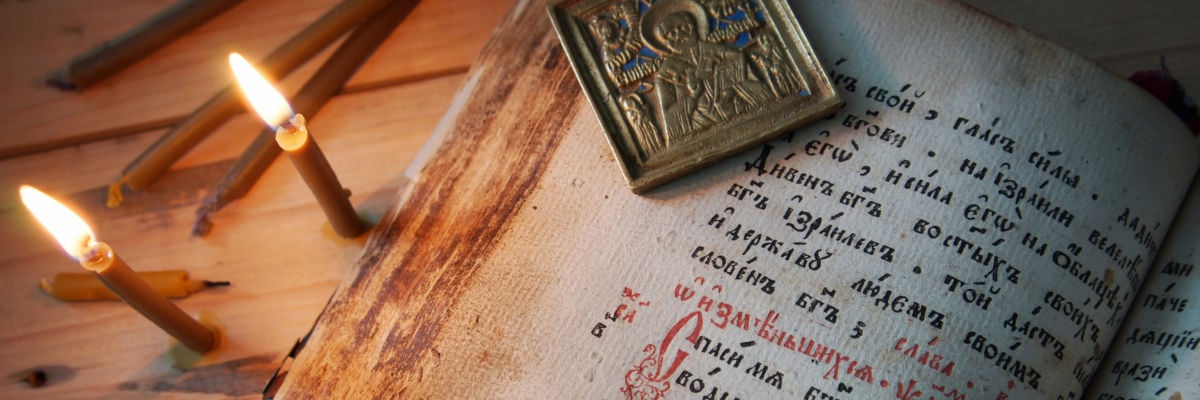
Psalterium
The Psalterium, or Book of the Psalms, only concerns us here in so far as it was transcribed and used for liturgical purposes.

Psalterium. —The Psalterium, or Book of the Psalms, only concerns us here in so far as it was transcribed and used for liturgical purposes. As a manual of private devotion it has already been sufficiently discussed under Prayer-Books. In its liturgical use the Psalterium contained the bulk of the Divine Office. The other books associated with it were the Lectionary, the Antiphonary, and Responsoriale, and the Hymnary. The Psalterium contained primarily all the text of the Psalms, and it may be noted that for some centuries the Western Church used two different Latin versions, both due to St. Jerome. The earlier of these was a mere revision of the pre-existing Latin translation which closely followed the Septuagint. St. Jerome undertook this revision in 383 at the request of Pope Damasus, and the text thus corrected was retained in use at Rome for many centuries afterwards. In 392, however, when at Bethlehem, the saint set about the same task much more seriously with the aid of the Hexapla. He produced what was almost a new version, and this being circulated in Gaul, through a copy sent to Tours in the sixth century, became commonly known as the “Psalterium Gallicanum”, and in the end entirely supplanted the Roman. A precious manuscript at the Vatican (Regin. 11), of the sixth or seventh century, contains the “Psalterium Gallicanum” upon the left-hand page, and a version made from the Hebrew upon each page facing it. The Psalter proper is here followed, as nearly always in these liturgical books, by the principal canticles, e.g. the Canticle of the Three Children, the Canticle of Moses etc. and, what is not so general a feature, though sometimes found, by a collection of hymns or Hymnarium. These last were more commonly written in a book apart. The oldest Psalter of the British Museum, which comes from St. Augustine’s, Canterbury, and which was long supposed to have been one of the actual books brought by St. Augustine to England, also contained the Canticles with two or three hymns.
In other similar books we find the Gloria, Credo, Quicunque vult, and the Litany of the Saints; at the beginning usually stands a calendar. Many of the more ancient psalteria which survive, as for example the “Psalterium Aureum”, of St. Gall and the “Utrecht Psalter”, both of them probably of the ninth century, are very richly illuminated or illustrated—a fact which has probably had much to do with their preservation. A certain tradition tended to establish itself at an early date with regard to the subjects and position of these embellishments. In particular the custom spread widely of dividing the whole Psalter into three parts containing fifty psalms each. Hence the first psalm, the fifty-first psalm, and the hundred and first psalm are usually introduced by a full-page miniature or by a richly-illuminated initial letter. Thus also in penitential codes and monastic documents of both England and Ireland during the early Middle Ages, it is common to find allusions to the recitation of “two fifties” or “three fifties”, meaning two or three of the divisions of the Psalter. With regard to the Divine Office the recitation of the Psalms was in primitive times so arranged that the whole Psalter was gone through in the course of the Sunday and ferial Office each week. In many psalteria marginal notes indicated which psalms belonged to each day and hour. Less commonly the psalms were not arranged in their numerical order, but, as in a modern Breviary, according to the order of their occurrence in the ferial Office. Both these classes of books were called psalteria feriata. In medieval cathedral chapters it was common to assign two or three psalms to each prebend for daily recitation, the psalms being so distributed that the bishop and canons got through the whole Psalterium between them. The repetition of the entire Psalter was, as many necrologies and monastic custumals show, a favorite form of suffrage for the dead.
HERBERT THURSTON


